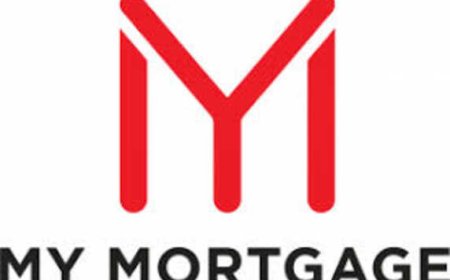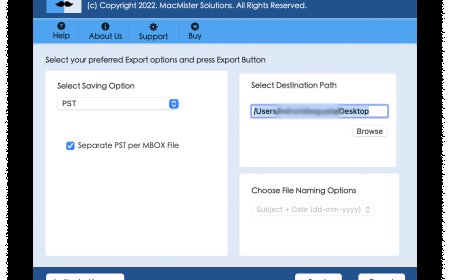The Step-by-Step Guide to Setting Up Your Virtual Staffing Agency
Looking to start your own remote staffing agency? This step-by-step guide provides everything you need—from defining your niche to building a successful team. Learn how to set up, market, and scale your business in the growing remote work industry.

In today's digital landscape, a remote staffing agency offers businesses a flexible and cost-effective way to access a global talent pool. The rise of remote work and technological advancements have made this solution increasingly attractive to companies aiming to optimize their workforce. If you're thinking about launching your own agency, this comprehensive guide will walk you through each step of the process.
Step 1: Research and Define Your Niche
Before you dive into the logistics of setting up your agency, its crucial to conduct thorough market research and define your niche. The remote staffing industry is broad, encompassing sectors such as customer service, IT, marketing, and more. By honing in on a specific niche, you can tailor your services to meet the distinct needs of a particular sector, making your offering more attractive to potential clients.
Why is defining your niche essential?
By specializing, your virtual staffing agency can stand out from the competition. Take inspiration from companies like Abacus Service Corporation, which focuses on delivering remote staffing solutions with industry-specific expertise. When you specialize, you attract clients who need specific services, such as virtual IT support, healthcare assistance, or marketing services, all of which are in high demand.
Step 2: Develop a Business Plan for Your Virtual Staffing Agency
A well-crafted business plan is the backbone of any successful venture. This is especially true for a virtual staffing agency, where understanding your market, pricing, and operations is key. Your business plan should include:
-
Business Model: Will you operate on a subscription basis, charge hourly, or set fixed project rates? Your pricing structure should be designed to meet the needs of your target audience.
-
Target Market: Who are you going to serve? Identify the industries or businesses that are most likely to benefit from virtual staffing services.
-
Services Offered: What roles will your agency fill? Virtual assistants, customer support agents, content creators, and even specialized IT experts are all possible offerings.
-
Marketing Plan: How will you attract clients? Explore SEO, content marketing, and digital advertising, taking a cue from successful agencies like Abacus Service Corporation that utilize online platforms to expand their reach.
A detailed business plan will act as your roadmap for success, helping you focus your efforts and attract clients effectively.
Step 3: Legal and Administrative Setup
With your business model and plan in place, it's time to focus on the legal and administrative aspects of setting up your virtual staffing agency:
-
Register Your Business: Choose a business name and structure (e.g., LLC, sole proprietorship). Register your agency according to local laws.
-
Licensing and Permits: Depending on your location and the nature of your staffing services, you might need specific licenses or permits.
-
Contracts and Agreements: Have clear agreements in place for both clients and staff. These should include roles, payment terms, and confidentiality clauses to protect your agency.
-
Accounting and Finances: Use accounting software to manage invoicing, expenses, and taxes. QuickBooks or FreshBooks are ideal for keeping finances organized.
These legal and administrative steps will ensure that your virtual staffing agency operates smoothly and legally.
Step 4: Build a Reliable Talent Pool
The heart of your agency will be the talent you offer. Building a reliable pool of virtual workers is crucial for success:
-
Create Clear Job Descriptions: Write specific job descriptions for the roles your agency will fill, including required skills and experience.
-
Recruitment Channels: Post on platforms like LinkedIn, Upwork, or specialized job boards. Social media and job-specific groups are also great ways to attract potential staff.
-
Screening and Interviews: Implement a rigorous hiring process, including interviews, skills tests, and background checks. This ensures you're hiring the best talent for your clients.
-
Onboarding and Training: Once your virtual staff is hired, provide training to ensure they are well-prepared for their respective roles. A smooth onboarding process will keep your clients happy and your staff productive.
Building a reliable and talented team is critical to the success of your virtual staffing agency. Its worth investing time and resources to ensure you're bringing in the best remote workers.
Step 5: Set Up Your Virtual Infrastructure
Running a remote staffing agency depends heavily on your technological infrastructure. Set up the right tools to manage communication, collaboration, and workflow:
-
Project Management Tools: Tools like Trello, Asana, or Monday.com will help you organize client projects, tasks, and deadlines.
-
Communication Tools: Use platforms like Zoom, Slack, or Microsoft Teams for seamless communication with both clients and virtual staff.
-
Time Tracking and Billing: Time-tracking tools like Toggl or Clockify will help monitor the hours worked by virtual employees, making invoicing easier.
-
Document Storage: Cloud-based systems like Google Drive or Dropbox ensure that documents and files are easily accessible and securely stored.
These tools are essential to ensure smooth operations, much like the systems used by Abacus Service Corporation to keep their virtual teams connected and productive.
Step 6: Establish Client Relationships and Marketing Strategies
Attracting clients is essential for the growth of your virtual staffing agency. Building strong relationships with businesses will not only generate immediate revenue but also long-term contracts and repeat business. Here's how to get started:
-
Networking and Outreach: Engage in networking activities, attend virtual events, and connect with decision-makers in industries that could benefit from virtual staffing.
-
Referral Programs: Word-of-mouth is a powerful tool. Offering incentives to clients who refer your agency to others can help expand your network.
-
Content Marketing and SEO: Create valuable content (blogs, case studies, etc.) that highlights the benefits of working with your virtual staffing agency. Optimize your website for search engines to attract inbound leads.
-
Social Media Campaigns: Use platforms like LinkedIn, Instagram, and Facebook to promote your services and connect with potential clients.
Implementing these strategies will help you develop lasting client relationships and increase visibility for your agency.
Step 7: Develop a Scalable Model
As your virtual staffing agency grows, you'll want to have systems in place to scale effectively. This includes:
-
Outsourcing Administrative Tasks: As the business grows, outsource administrative responsibilities such as payroll, invoicing, or human resources to free up your time for more strategic activities.
-
Hiring More Talent: Continuously recruit new virtual workers to meet the demands of your clients. Establishing a pipeline of talent will help you meet client needs quickly.
-
Automation Tools: Use automation tools to handle routine tasks like invoicing, follow-up emails, and scheduling. This can save time and reduce errors in your operations.
A scalable model ensures you can grow your agency without compromising on service quality.
Step 8: Monitor Performance and Adapt
The final step in running a successful virtual staffing agency is to regularly evaluate your performance and make adjustments as needed. Track key performance indicators (KPIs) like:
-
Client Satisfaction: Conduct regular feedback surveys to assess client satisfaction and identify areas for improvement.
-
Staff Performance: Use performance metrics to track the effectiveness and productivity of your virtual staff.
-
Revenue and Profitability: Monitor your revenue streams and adjust your pricing or service offerings if needed to improve profitability.
Adapt your strategy based on client needs and industry trends to ensure your agency stays competitive. Take cues from companies like Abacus Service Corporation, which continuously adapts its strategies to stay ahead of industry changes.
Ready to Launch Your Remote Staffing Agency?
Setting up a virtual staffing agency requires careful planning, research, and execution. By following the steps outlined in this guidedefining your niche, creating a solid business plan, building a talented workforce, and developing strong marketing strategiesyoull be well on your way to establishing a successful virtual staffing business.
Have questions or are ready to take the next step in launching your remote staffing agency? We're here to help! Whether you need expert guidance, resources, or assistance in setting up your business, contact us today and lets turn your ideas into action. The future of work is at your fingertipslets make it happen together!



























